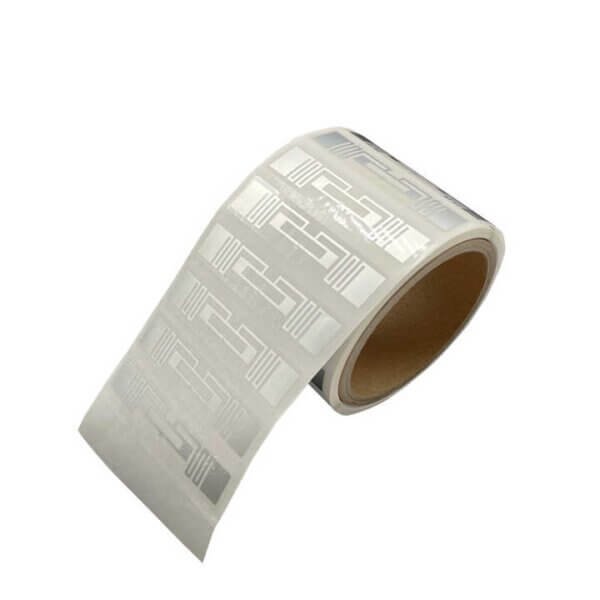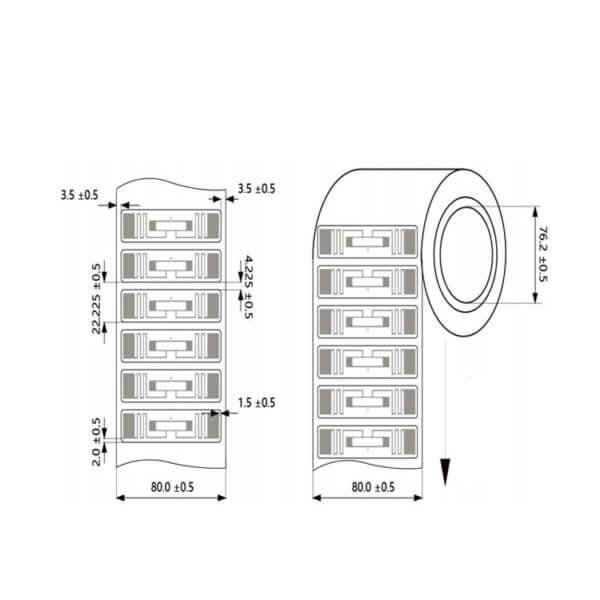RFID Label Stickers: An Intelligent Tool for Efficient Management and Tracking
In modern business management, the efficiency of item tracking and management plays a crucial role in improving productivity, reducing waste, and enhancing customer satisfaction. FID label stickers (Radio Frequency Identification, or RFID tags) have become an essential component in many industries such as logistics, retail, and manufacturing. This advanced labeling technology not only improves the accuracy of asset management but also provides companies with more efficient inventory management, tracking, and anti-counterfeiting capabilities.
1. What are FID Label Stickers?
FID label stickers are tags that use Radio Frequency Identification (RFID) technology. RFID works by using radio waves to transfer data wirelessly, enabling information exchange without direct contact. FID labels typically consist of a microchip and an antenna, embedded in paper or plastic stickers. Each FID label contains a unique identifier that allows it to be matched with information in a database when scanned, enabling rapid item identification and tracking.
2. How Do FID Labels Work?
FID labels work by communicating wirelessly with an RFID reader. When the label comes within range of the reader, the reader activates the label through radio waves, reads the data stored on it, and transmits this information to a database or management system. Depending on the frequency and technology used, FID labels can be categorized as Low Frequency (LF), High Frequency (HF), and Ultra High Frequency (UHF) tags, with each type offering different reading distances, storage capacities, and use cases.
3. Advantages of FID Labels
- Improved Item Management Efficiency: Traditional barcode scanning requires manual scanning of each item and has a limited scanning range, whereas FID labels can be automatically identified at a distance, with the ability to scan multiple labels simultaneously. This is particularly beneficial in large warehouses or logistics centers, where RFID technology can significantly enhance inventory checks and item tracking efficiency.
- Reduced Human Error: By automating the identification and data transfer process, FID labels minimize the risk of human error, ensuring data accuracy and consistency.
- Real-Time Data Updates: FID labels enable real-time data collection and updates, allowing businesses to have up-to-the-minute visibility into inventory levels and optimize procurement, production, and distribution planning.
- Anti-Counterfeiting and Security: Since each FID label has a unique identifier that is difficult to replicate, it plays a crucial role in preventing counterfeit products and enhancing product security. This is particularly important in industries such as pharmaceuticals and luxury goods, where preventing fraud is a top priority.
- Enhanced Customer Experience: Retailers can use FID labels to quickly track products, update stock levels, and offer personalized recommendations, all of which improve the overall shopping experience for customers.
4. Applications of FID Labels
The applications of FID labels have expanded across multiple industries, including:
- Logistics and Supply Chain Management: FID labels help businesses automate inventory management, optimize logistics routes, reduce stockouts and waste, and improve overall supply chain efficiency.
- Retail: Retailers can use FID labels to track products in real time, ensuring there is always sufficient stock on shelves. Customers can also quickly access product information via smart devices, enhancing their shopping experience.
- Healthcare: In hospitals and pharmaceutical supply chains, FID labels are used to track medical equipment, pharmaceuticals, and other supplies, ensuring the safe and effective use of items while preventing expiration and damage.
- Asset Management: Whether it’s office equipment or industrial machinery, FID labels enable businesses to track and manage fixed assets accurately, preventing loss or misplacement.
5. Future Trends in FID Label Technology
As the Internet of Things (IoT) and 5G communication technologies continue to advance, FID labels are expected to become more intelligent and efficient. In the future, FID labels may go beyond simple data storage to integrate with sensors, positioning systems, and other technologies, enabling more precise monitoring and real-time tracking of items. Additionally, as the cost of RFID tags continues to decrease, they will be widely adopted across even more industries.
6. Conclusion
FID label stickers, as an efficient and accurate tool for item tracking and management, are transforming operations across various sectors. Whether it’s improving productivity, reducing waste, or enhancing customer experience, FID labels play an indispensable role. As technology continues to evolve, the scope and value of FID labels will only expand, and they will continue to deliver significant benefits in a growing range of applications.
By adopting FID label technology, businesses can achieve smarter and more detailed management, helping them maintain a competitive edge in an increasingly challenging marketplace.



















